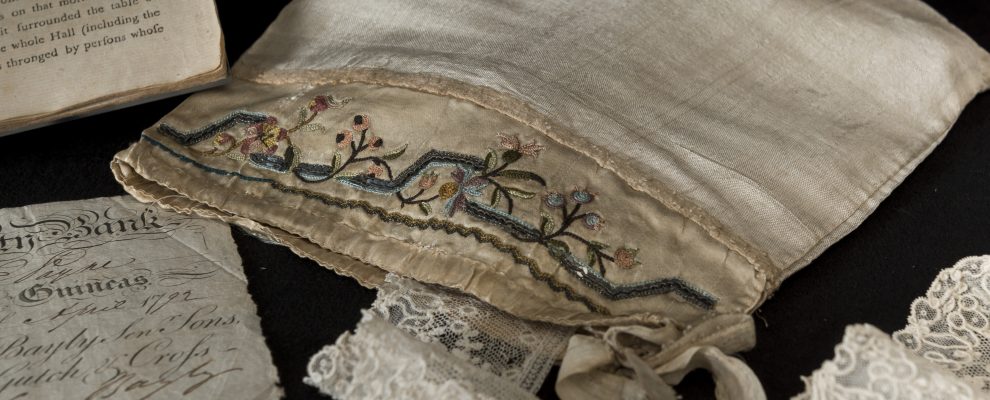A sharp rise in shoplifting in the early-eighteenth century reveals a darker side accompanying the growing market for new and desirable goods. Shoplifting goods worth 5 shillings or more was defined as a capital offence in 1699 until 1823. Though most reported property crimes were petty transgressions by the lower classes, on certain occasions a member of the gentry was tried for ‘privately stealing’ what they presumably could have afforded to purchase. Reports suggest that elite women in particular shoplifted items out of temporary boredom or for personal thrill.
Arguably the most infamous account of polite shoplifting at the end of the century was the trial of Jane Leigh-Perrot, the maternal aunt of famous novelist Jane Austen. In the early afternoon on August 8th 1799 Elizabeth Gregory, a haberdasher in Bath, stopped Mrs Leigh-Perrot in the middle of the street and openly accused her of stealing a card of white lace from her store earlier that day. Local newspapers reported that Gregory proceeded to take a package from Mrs Leigh-Perrot’s hands and upon inspection found the very lace in question.
Under the Shoplifting Act of 1699, Leigh-Perrot faced death by hanging or deportation to Australia for up to 14 years if found guilty. At the trial Gregory supplied witnesses and descriptions of the event as evidence, while Jane Leigh-Perrot countered the accusations by insisting that it must have been the shopman’s mistake. She pointed out her affluence and questioned her peers: ‘What inducement could I have to commit such a crime?’ Jane was further supported by friends and family who vouched for the strength of her Christian character, as well as by other women who had similar unfortunate experiences at Mrs Gregory’s shop.
The jury met for less than an hour before declaring Jane Leigh-Perrot innocent. Considering the lack of evidence, it is unclear whether this ruling reflected their genuine belief in her innocence or, more likely, the jury’s desire to protect someone of her status and gender from the indignity of her crime.
The historian Shelley Tickell notes in her thesis on shoplifting in eighteenth-century England a case of ‘middling theft’ which was tried in the Old Bailey. Sarah Tonge, a milliner, was accused of shoplifting lace from a shop in 1773. A Long Acre goldsmith spoke in her defence, stating that ‘We have had many mistakes in our shop…and ladies have carried things to their coach…in their laps some how. The judge asked ‘Now suppose a fine lady was to come into your shop, and you should miss some jewels, and find them afterwards, half way down their stays, would you think that was a mistake?’ The goldsmith reported that he had indeed found this ‘mistake’, ‘and taken them out’. Juries, judges, and shopkeepers themselves were therefore reluctant to accuse middling or elite customers of shoplifting. To do so carried too great a risk to their own customer relations and livelihoods.
Further reading:
Shelley Tickell, ‘Shoplifting in eighteenth-century England’, e-thesis, University of Hertfordshire, 2015.
Links to collection:
Online database of proceedings from the Old Bailey, including cases of theft and fraud. www.oldbaileyonline.org

